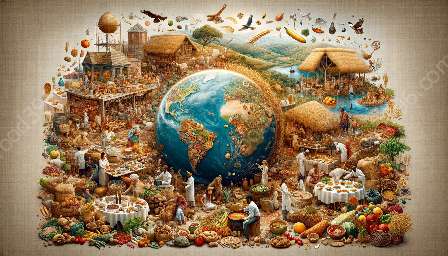Seed banks play a critical role in preserving biodiversity and traditional food systems. By collecting, storing, and conserving seeds, these institutions help protect the genetic diversity of plant species and ensure the availability of traditional crops. This comprehensive topic cluster covers the significance of seed preservation, its relationship to biodiversity conservation, and its impact on traditional food systems.
The Importance of Seed Banks
Seed banks, also known as gene banks or seed vaults, are facilities that store seeds from a wide range of plant species. These institutions are vital for safeguarding the genetic resources of crops and wild plant species, especially in the face of environmental threats, climate change, and human activities that endanger the diversity of plant life.
Conservation of Genetic Diversity
Seed banks preserve genetic diversity by collecting and storing seeds from various plant populations. This diversity is crucial for plant breeding, adaptation to changing environmental conditions, and the development of new crop varieties resistant to pests, diseases, and climate extremes. By conserving a wide range of genetic traits, seed banks contribute to the long-term sustainability of agriculture and food security.
Seed Preservation and Biodiversity
Seed preservation involves the careful storage and maintenance of seeds to ensure their viability and genetic integrity. This process is essential for maintaining biodiversity, as it helps protect rare and endangered plant species, as well as traditional crop varieties that are at risk of being lost. Through systematic seed preservation, seed banks help prevent the extinction of valuable plant genetic resources and support the conservation of diverse ecosystems.
Traditional Food Systems
Seed banks play a crucial role in supporting traditional food systems by preserving the seeds of indigenous crops and heirloom varieties. These traditional crops often have cultural significance and are adapted to local environmental conditions, making them valuable resources for sustainable agriculture and community resilience. By conserving the seeds of traditional crops, seed banks contribute to the preservation of culinary heritage and promote the resilience of traditional food systems.
Challenges and Opportunities
Despite their significance, seed banks face challenges such as funding constraints, technical issues in seed storage, and the need for international collaboration in seed conservation efforts. However, there are also opportunities for innovation, such as the use of biotechnology and data-driven conservation strategies to enhance the effectiveness of seed banks in safeguarding plant genetic resources.
Conclusion
Seed banks are vital for preserving biodiversity, maintaining traditional food systems, and ensuring the resilience of agricultural practices in the face of global challenges. Through seed preservation and conservation efforts, these institutions contribute to the sustainable management of plant genetic resources and the promotion of resilient, diverse, and nutritious food systems.

